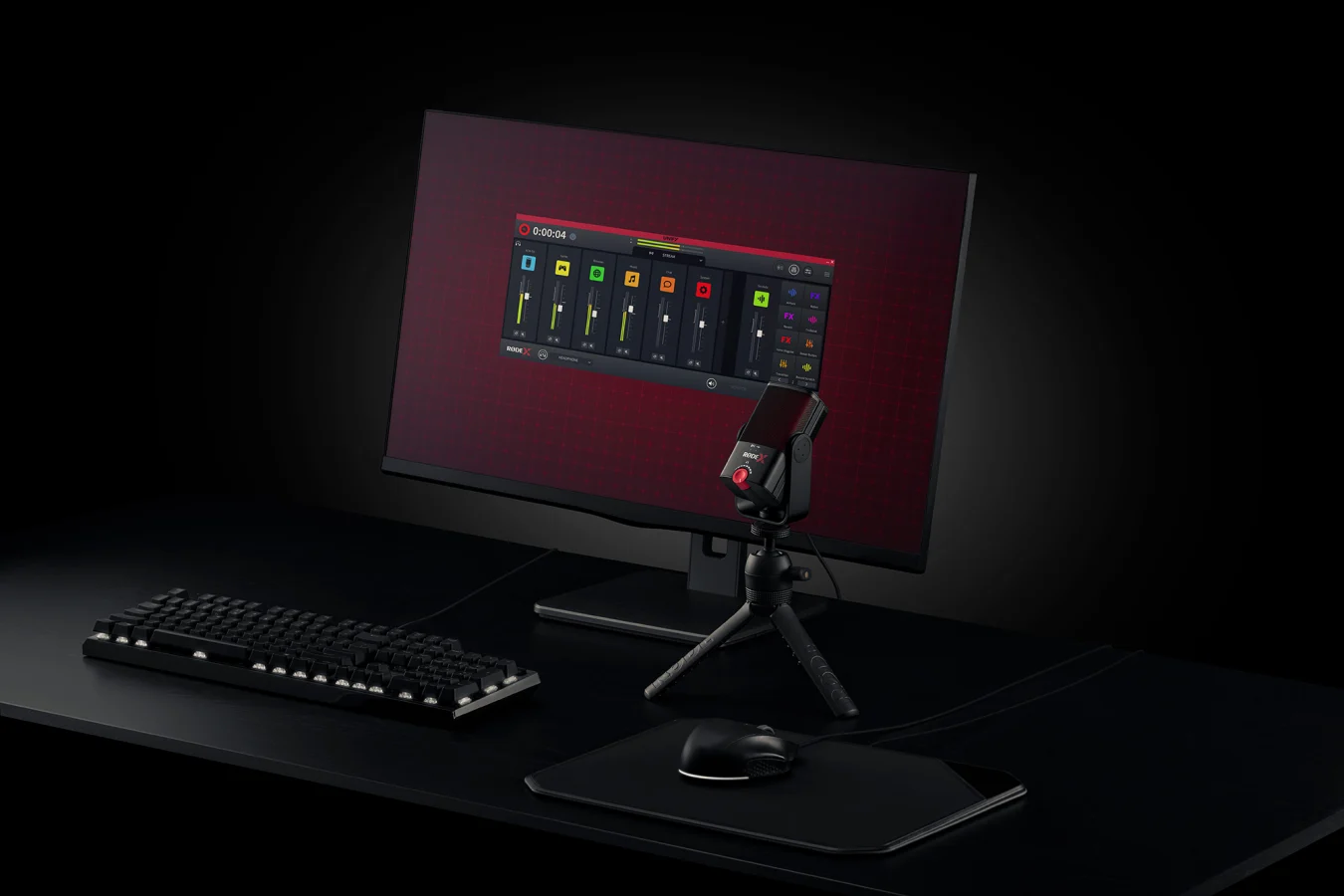Gaming creators and streamers will already be familiar with Rode. The company’s and make good options for those plugging into OBS, YouTube, Twitch and anywhere else you might “go live.” But as of today, there’s a whole new sub brand specifically catering to their needs: Rode X.
The first three products under the new mark include two microphones and a comprehensive desktop app for stream routing and mixing. The mics will look eerily familiar to fans of Rode products, but the company assures us they have been “redesigned internally for optimal performance for streaming and gaming.”
The new mics are the XDM-100 ($249) and XCM-50 ($150). The clue to the difference between them is in the name – D for dynamic, C for condenser (you can read about the difference ). The XDM-100, at least physically, looks like Rode’s with a dash of red at the top. The XCM-50 is a condenser microphone that appears to be built on the same platform as the and features a distinct red button on the front.
James Trew / Tech Reader
Both microphones are USB only (no XLR), which means you won’t need an audio interface to use them, and they have built-in headphone ports for latency-free monitoring. Which of the two might interest you most will depend on both your preferences and the room where you stream from.
The XCM-50 has a bright sound that will work well for those in acoustically treated, or “softer” rooms. When tested side by side with its NT-USB Mini doppelganger, they do sound incredibly close, but to my ears the XCM-50 is a tiny bit brighter sounding. The NT-USB Mini sounds a shade “closer” by comparison.
The XDM-100 has a more classic “dynamic” microphone sound. While perhaps not quite as well rounded as something like the Shure SM7B or even Rode’s own Podmic, it feels cleaner than the Podcaster that it shares its physical appearance with. If you want a good USB dynamic option, this feels like a competitive choice for the price. Especially once coupled with the new Unify software.
The one thing that a lot of gamers and streamers really need isn’t so much a microphone – there are many options for that – it’s a reliable tool to route all the sounds in your stream, usually some mix of game sounds, chat, music and effects. With Unify, you have a simple software solution that is similar to the routing matrices you find with the GoXLR, the or Elgato’s .

Rode
Unify creates a couple of virtual audio interfaces on your PC and you can then control which app uses what, and where that sound goes. For example, you probably want your intro music to go out on the stream, but maybe you don’t want it in your headphones? Or maybe you want your audience to hear a YouTube video you’re playing, but not the music you’re streaming. With Unify, you can pipe most things to most places, and then change the levels, or “mix” for each destination also.
Rode has added the ability to record all your audio directly within the app, too. This makes it appealing to more than just streamers. For example, you could use it to record both sides of a Zoom call and be able to feed audio into that call that would otherwise be tricky. The fact that Unify has sound pads for intros and effects means it also works quite well as a software “Rodecaster Pro.”
Unify looks most similar to Wave Link but offers much more fine-grained control. The app isn’t quite as simple as BEACN’s, which lets you access each mix matrix at all times and has a slightly clearer UI. BEACN also benefits from the hardware mixer, too, but there’s no option to record within that app or trigger sound effects.
Where Unify differs from most of its rivals is that you don’t have to buy the company’s hardware to use it. If you just wanted the software features you can pay $5 a month or $45 a year for the app alone. This means you can easily use it with any microphone you have, you’re not beholden to using a Rode (unlike, Wave Link that requires an Elgato mic). If you do buy a Rode X mic, then the software is free. Sadly, if you already own a Rode USB mic, it won’t unlock the software, you’ll be paying like everybody else.
All products recommended by Tech Reader are selected by our editorial team, independent of our parent company. Some of our stories include affiliate links. If you buy something through one of these links, we may earn an affiliate commission. All prices are correct at the time of publishing.
